A pool is meant to be a place of relaxation, fun, and exercise. However, the reality of pool ownership sometimes brings unexpected challenges, one of which is the discovery of a dead animal in the water. This unpleasant occurrence can introduce harmful bacteria, parasites, and other contaminants, making it critical to act quickly.
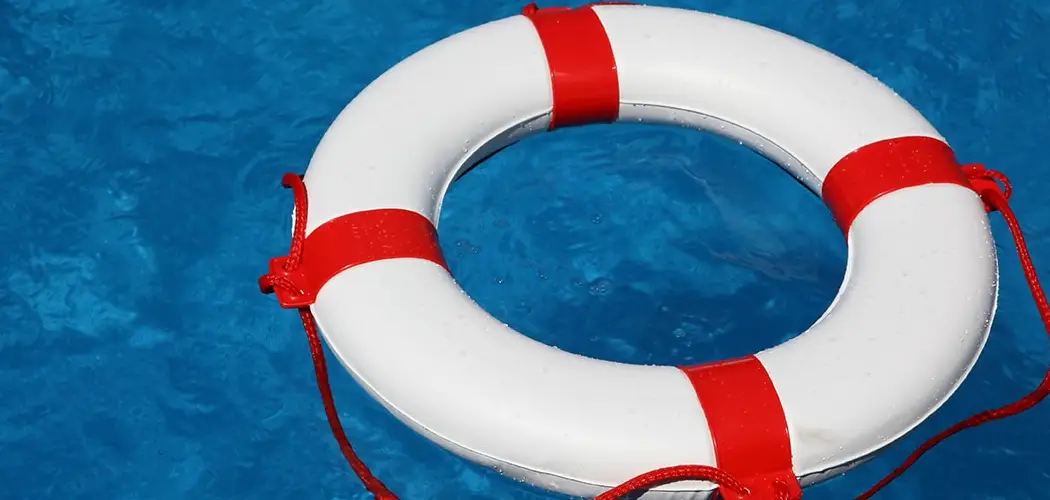
Knowing how to clean pool after dead animal incident is vital for maintaining hygiene, ensuring safety, and restoring your pool to a usable state. By following a detailed step-by-step process, you can efficiently clean and sanitize your pool to eliminate any potential risks.
This guide dives into the tools, methods, and preventative practices necessary to tackle this issue effectively. Whether you’re cleaning up after a small rodent or a larger animal, the steps below will ensure your pool water is both clean and safe for swimmers.
Assessing the Situation
Identifying the Problem
When handling a situation like this, the first step is to evaluate the scenario thoroughly:
- Determine the Type of Animal
Identifying the animal is key because small animals like insects or birds pose less risk compared to larger animals like cats, raccoons, or opossums. Larger animals introduce more contaminants, which require more intensive cleaning efforts.
- Estimate How Long the Animal Has Been in the Pool
The level of contamination depends on time. If the animal was recently discovered, pathogens may not have fully spread in the water. However, a longer exposure increases bacterial growth, making a more rigorous cleaning process essential.
- Check for Pool Use Following the Incident
If someone swam in the pool after the animal’s presence, additional steps need to be taken, such as disinfecting swimsuits and advising users about symptoms of potential infection.
Evaluating Safety Risks
Harmful microorganisms like E. coli, Salmonella, and even parasites like Cryptosporidium can be introduced to the pool water via a decomposing animal.
These microorganisms can lead to various infections, including gastroenteritis or skin ailments, making risk assessment crucial.
If the animal appears decomposed, it’s safer to assume serious contamination and proceed with aggressive cleaning measures. Additionally, if you have cuts or open wounds, avoid entering the water until the pool is thoroughly sanitized.
Essential Safety Precautions
Before cleaning begins, prioritize safety. Handling dead animals and contaminated water can expose you to harmful pathogens. Follow these safety guidelines meticulously:
- Use High-Quality Personal Protective Equipment (PPE)
Gloves made from a durable material like nitrile are essential. Goggles protect your eyes from splashes, and disposable face masks guard against airborne bacteria.
- Maintain Good Hygiene Practices
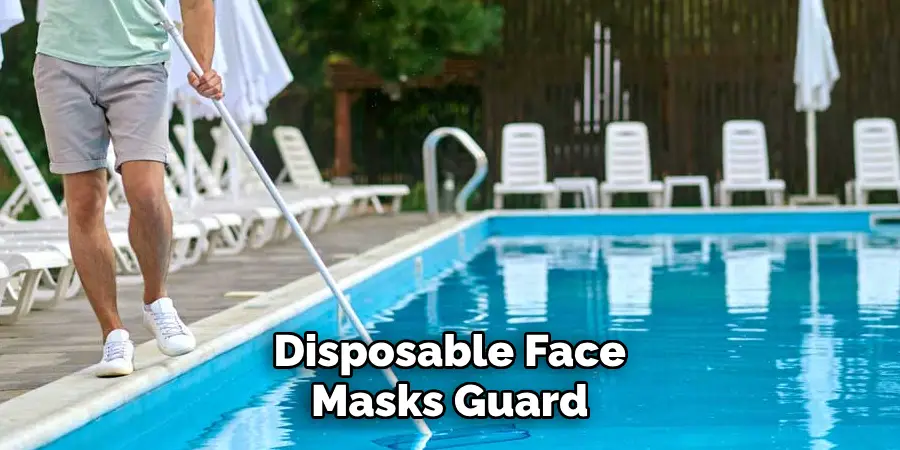
Avoid touching your face or other surfaces during cleanup. After finishing, thoroughly wash your hands, face, and any exposed skin with antibacterial soap.
- Have a First Aid Kit Nearby
Include antiseptic wipes, disinfectants, and bandages in case of accidents.
By adhering to these precautions, you not only protect yourself but also minimize accidental spreading of contaminants.
Removing the Dead Animal
Tools Required
Gathering the right tools ensures you can expedite the process effectively while minimizing contamination risks. You’ll need:
- A sturdy pool skimmer or net with sufficient reach to avoid direct contact.
- Heavy-duty garbage bags are capable of sealing tightly to prevent leaks or odors.
- A strong disinfectant to clean tools after use and sanitize the surrounding pool equipment.
Each tool plays a vital role in ensuring a clean and efficient removal process.
Step-by-Step Guide to Removal
- Prepare Yourself and the Site
Suit up with PPE and ensure children and pets are kept away from the pool area. Double-check garbage bags for leaks before proceeding.
- Remove the Animal
Using the skimmer or net, gently scoop out the animal. Avoid jerky movements to prevent the carcass from breaking apart in the water.
- Dispose of the Animal Safely
Place the animal in two layers of garbage bags for added safety. Check local guidelines for disposal. Some jurisdictions may have special requirements for disposing of animal remains.
- Sanitize Equipment
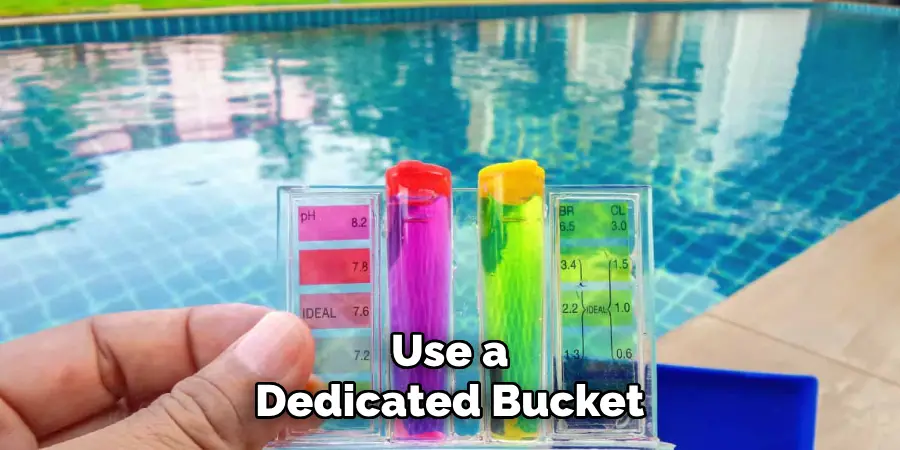
Immediately disinfect the skimmer or net used. Use a dedicated bucket filled with disinfectant solution and scrub tools thoroughly.
Ensure that the surrounding pool deck is also cleaned if any tools, water, or debris came into contact with the area.
How to Clean Pool After Dead Animal: Cleaning and Sanitizing the Pool
Initial Cleanup
Start by skimming the water surface to collect any visible debris that may have been introduced due to the animal’s presence. Check areas like the pool floor, steps, and corners for smaller particles or debris.
For pools with a vacuum system, consider running it to clear particles from less accessible areas.
Shock Treatment
Chlorine-based pool shock is a powerful disinfectant that raises the free chlorine levels to kill bacteria and viruses effectively. Follow these steps:
- Measure Your Pool Size
Accurately calculate your pool’s volume to use the correct amount of shock treatment. Over-chlorination can damage pool equipment or irritate skin and eyes.
- Prepare the Shock Solution
Mix the powder or liquid with water in a bucket if required. Always add shock to water, not water to shock, to avoid hazardous reactions.
- Apply Around Pool Edges
Distribute the shock evenly by pouring it along the pool’s perimeter. Avoid dumping the solution all at once into one area.
- Allow Circulation Time
Run the pool pump continuously for 8-12 hours to ensure the shock solution is thoroughly dispersed.
After shocking the pool, inform household members not to use the pool until chemical levels normalize.
Balancing Chemicals
Using a pool test kit, measure the following and make adjustments as necessary:
- pH Levels: Aim for a range of 7.2 to 7.8 to ensure disinfectants work effectively.
- Chlorine Levels: Ensure the free chlorine level returns to a safe range of 1-3 ppm before permitting swimming.
- Alkalinity: Should range between 80-120 ppm to prevent pH swings.
Running the Filtration System
Run the filter continuously for 24 hours or longer post-cleanup. If your pool uses a cartridge filter, examine it afterward for trapped debris and consider replacing it if heavily contaminated.
Testing the Water
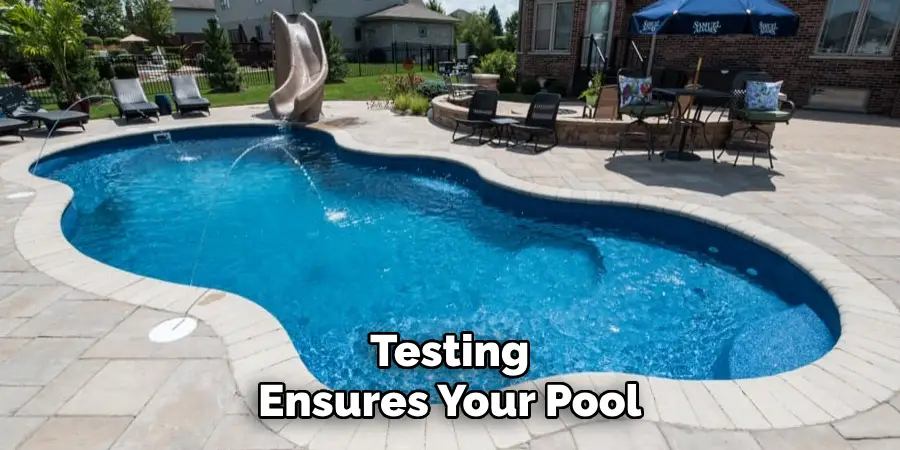
Testing ensures your pool is safe for use. Beyond the basics of chlorine and pH, consider using bacteria-specific testing strips for added confidence.
Retest the water after a day or two to confirm the effectiveness of your cleaning efforts. If anything seems off, re-shocking or re-filtering may be necessary.
Preventive Measures to Avoid Future Incidents
To prevent future pool water issues, it’s important to regularly maintain your pool and follow some basic preventive measures. These include:
- Skimming the surface of the pool daily to remove debris
- Vacuuming or brushing the walls and bottom of the pool weekly
- Checking and adjusting chlorine levels regularly
- Shocking the pool after heavy usage or rainstorms
- Checking and balancing pH levels weekly
It’s also recommended to have your pool professionally serviced at least once a year to ensure all equipment is functioning properly and catch any potential issues before they become bigger problems.
When to Call a Professional
If you find yourself facing a pool pest problem that appears beyond your control, don’t hesitate to call in the professionals. Wildlife removal experts are trained and equipped to handle any situation, from removing unwanted animals from your property to cleaning up any damage they may have caused.
When considering hiring a professional, look for companies with experience in humane animal removal techniques and environmentally friendly practices. They can not only help you solve your current pest problem but also provide advice on how to prevent future ones.
Frequently Asked Questions About Dead Animals in Pools
How Do I Safely Remove a Dead Animal From My Pool?
To safely remove a dead animal, wear gloves and use a pool net or skimmer to extract it. Ensure you dispose of the animal properly per local regulations and sanitize your hands afterward.
What Should I Do After Removing the Animal?
Immediately sanitize the pool by shocking it with chlorine and ensure your filtration system is running. Test the chemical levels to confirm the water is safe before swimming again.
Can Dead Animals in Pools Make You Sick?
Yes, they can potentially carry harmful bacteria or diseases. This is why proper removal and sanitization are essential to ensure the pool is safe for use.
When Should I Call a Professional?
If the animal is large, decomposed, or if you’re unsure about handling the situation, it’s recommended to contact a professional who can ensure thorough cleaning and safety.
How Can I Prevent Animals From Getting Into My Pool?
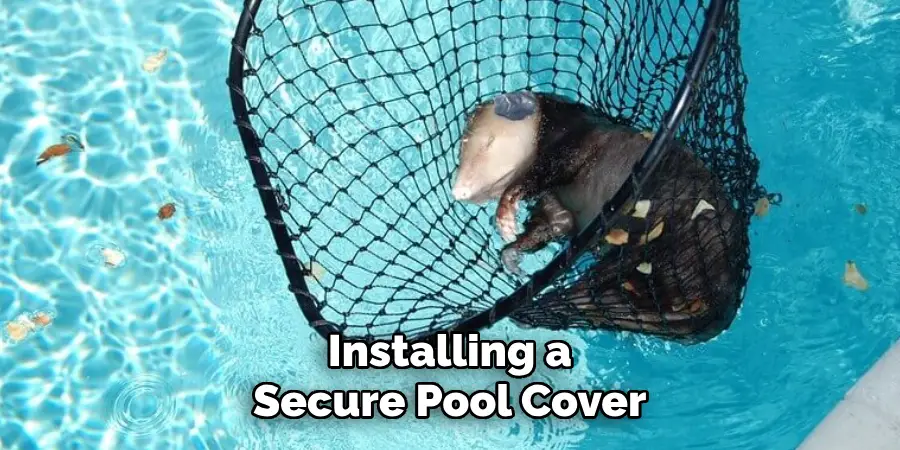
Installing a secure pool cover, fencing, or screens around your pool area can help keep animals out. Regular pool area maintenance also discourages wildlife from wandering near.
Conclusion
Dealing with a dead animal in your pool can be distressing, but by following the correct steps, you can restore your pool to a hygienic state quickly and effectively.
From immediate safety precautions to thorough cleaning procedures, every step plays a vital role in ensuring swimmer safety.
Remember, knowing how to clean pool after dead animal contamination isn’t just a practical skill—it’s essential for maintaining a safe and enjoyable pool environment. Take action quickly, use preventive measures, and enjoy your pool with peace of mind.
About
Outdoor Fixes is a distinguished figure in the world of Diy design, with a decade of expertise creating innovative and sustainable Diy solutions.
His professional focus lies in merging traditional craftsmanship with modern manufacturing techniques,
fostering designs that are both practical and environmentally conscious. As the author of diy,
outdoorfixes delves into the art and science of outdoorfixes-making, inspiring artisans and industry professionals alike.
Education RMIT University
(Melbourne, Australia) Associate Degree in Design (Outdoor Fixes) Focus on sustainable design, industry-driven projects,
and practical craftsmanship. Gained hands-on experience with traditional and digital manufacturing tools, such as CAD and CNC software.
Nottingham Trent University
(United Kingdom) Bachelor’s in outdoorfixes.com and Product Design (Honors) Specialized in product design with a focus on blending creativity with production
techniques. Participated in industry projects, working with companies like John Lewis and Vitsoe to gain real-world insights.
Publications and Impact
In diy, Outdoor Fixes his insights on indoor design processes, materials, and strategies for efficient production.
His writing bridges the gap between artisan knowledge and modern industry needs, making it a must-read for both budding designers and seasoned professionals.

